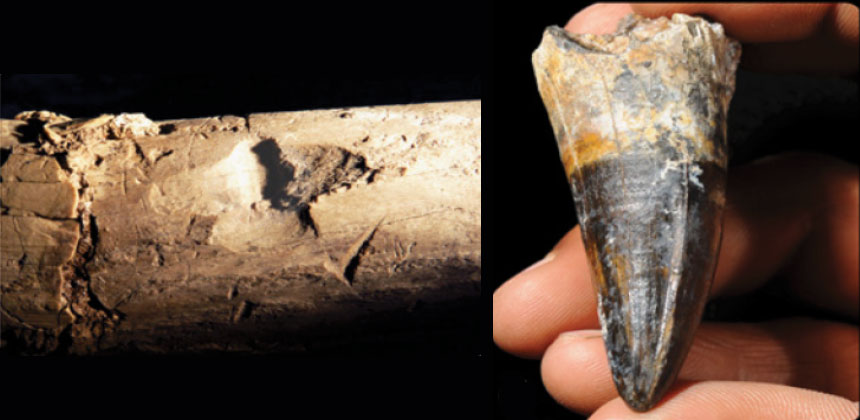
Recent reports of African and North American animal fossils bearing stone-tool marks from being butchered a remarkably long time ago may be a crock. Make that a croc.
Crocodile bites damage animal bones in virtually the same ways that stone tools do, say paleoanthropologist Yonatan Sahle of the University of Tübingen in Germany and his colleagues. Animal bones allegedly cut up for meat around 3.4 million years ago in East Africa (SN: 9/11/10, p. 8) and around 130,000 years ago in what’s now California (SN: 5/27/17, p. 7) come from lakeside and coastal areas. Those are places where crocodiles could have wreaked damage now mistaken for butchery, the scientists report online the week of November 6 in the Proceedings of the National Academy of Sciences.
Larger samples of animal fossils, including complete bones from various parts of the body, are needed to begin to tease apart the types of damage caused by stone tools, crocodile bites and trampling of bones by living animals, Sahle’s team concludes. “More experimental work on bone damage caused by big, hungry crocs is also critical,” says coauthor Tim White, a paleoanthropologist at the University of California, Berkeley.
In a field where researchers reap big rewards for publishing media-grabbing results in high-profile journals, such evidence could rein in temptations to over-interpret results, says archaeologist David Braun of George Washington University in Washington, D.
C., who did not participate in the new study or the two earlier ones. “There’s a push to publish extraordinary findings, but evolutionary researchers always have to weigh what’s interesting versus what’s correct.”Authors of the ancient butchery papers agree that bone marks made by crocodiles deserve closer study and careful comparison with proposed stone-tool marks. But the researchers stand…
The post Crocs take a bite out of claims of ancient stone-tool use appeared first on FeedBox.